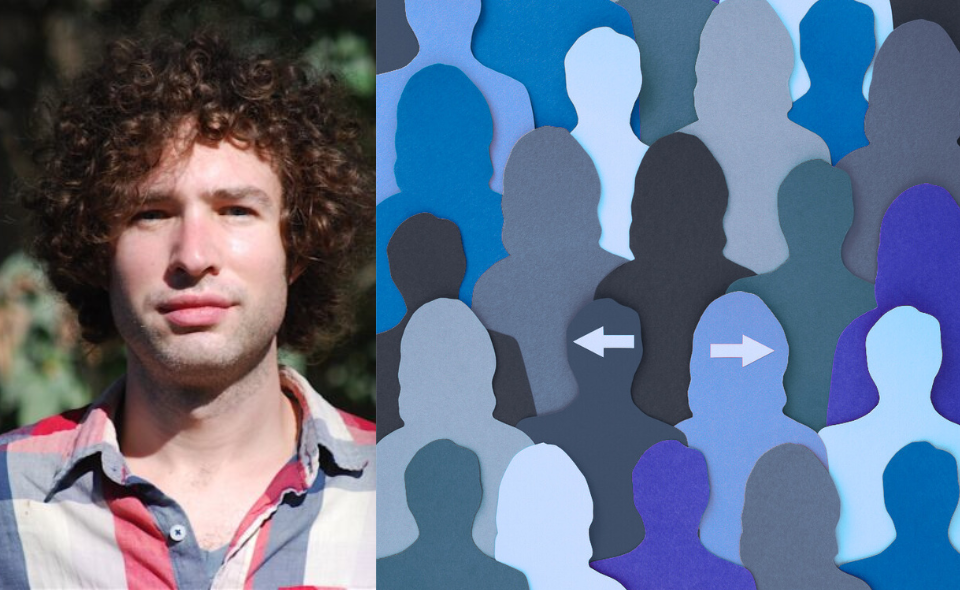

Most people assume they have a clear sense of the social world around them. They think that they know who spends time together, who confides in whom, and which relationships hold influence in their community. But new research suggests those mental maps are often wrong—and those errors follow systematic, surprisingly predictable patterns. In some settings, these blind spots can have serious consequences for how people access support, share knowledge, and build trust.
A team led by Columbia Data Science Institute postdoctoral fellow Eric Feltham set out to understand how people perceive the social ties in their communities—and how those perceptions differ from reality.
Published this month in Nature Human Behaviour, the study draws on research Feltham began at Yale University. The study is co-authored by Laura Forastiere and Nicholas Christakis at Yale. Based on in-person interviews with more than 10,000 adults across 82 rural Honduran villages, it’s one of the largest field studies of social perception to date. Participants were asked whether specific pairs of other villagers were connected: whether they were kin, spent time together, or discussed personal or private matters together. The researchers then compared those perceptions to full network data built from independent surveys, revealing how people’s mental models diverged from the actual structure.

The result is a data-rich portrait of “network cognition,” how people mentally represent social ties, and it reveals a striking pattern: people tend to misjudge ties in ways that reflect and reinforce social divides.
“We all have to form mental maps of our social worlds in order to navigate them,” Feltham explains. “But people bring strong prior beliefs to that task—like assuming that kinship always means closeness, or that people from different religions don’t interact—and that can give a misleading view of the actual social structure.”
A particularly revealing finding was how people systematically overestimated the strength of family ties, assuming they implied closeness in daily life–even when they didn’t. Participants were a substantial 33 percentage points more accurate when judging ties between unrelated individuals.
Most participants overestimated how densely connected their communities were—creating the illusion of cohesion, and masking how influence and information really flowed.
– Eric FelthamTo identify patterns in these errors, the researchers used statistical models to uncover a set of key themes. Status, religion, and social proximity all influenced perception. People were more likely to recognize ties within their own identity group—and were more likely to overlook relationships when they crossed class or religious lines. These biases distorted not only what people believed about particular individual relationships, but how they understood the broader shape of their communities.
And this has consequences. In less developed parts of the world, where access to banks, hospitals, or public services is limited, social networks fill the gap in finding expertise. If someone needs advice or a loan, the person who can help might not be a direct connection. Instead, that person may be a friend of a friend, or someone even further removed in the network. Knowing how people are connected isn’t just useful; it can be life-shaping.
The study showed that people who were better connected within the network—more central, socially—were more accurate in assessing the patterns of relationships around them. Education and relative wealth also improved accuracy. But most participants overestimated how densely connected their communities were. When the researchers constructed mental maps corresponding to the beliefs of a typical person, those maps included many ties that didn’t actually exist—creating the illusion of cohesion, and masking how influence and information really flowed.
In a related research project, Feltham’s colleagues introduced public health messages—such as how to use zinc to treat childhood diarrhea—to a randomized group of villagers. A year later, researchers checked to see who had learned the information. Here, Feltham and colleagues found that the villagers with a clearer understanding of social ties were significantly more likely to have picked up the information, even if they hadn’t been directly targeted by the research team. In other words, these individuals were more sensitive to information that flows through social learning.
This points to a deeper challenge to the data science of human social behavior. It’s not enough to map a network from the outside. Understanding how individuals perceive the structure is just as important—especially in areas like public health and social policy. Misperceptions can block trust, hide influencers, or hinder key communication channels.
Feltham’s current research builds on these questions, exploring how people mentally organize the social worlds around them. At Columbia, Feltham is advised by Professors Peter Bearman, the Cole Professor of Social Science in the Department of Sociology, and Caleb Miles, Assistant Professor of Biostatistics at the Mailman School of Public Health. Feltham is developing new approaches to study how individuals perceive networks—especially how they lean on identity as a heuristic and may see more segregation than truly exists. Drawing on the resources of the Data Science Institute at Columbia University, he’s investigating how those mental models reflect deeper cognitive and cultural biases.
While this study focused on a region in the developing world, an important and sometimes-overlooked region in the study of social behavior and cognition, its methods and insights are broadly relevant. “These kinds of network biases aren’t just a developing world phenomenon,” Feltham notes. “They show up in different forms anywhere people are embedded in communities—online, in workplaces, in neighborhoods.”
Using large-scale network data to study small-scale judgments, Feltham’s research reveals how perception and structure may not align—and how that misalignment follows social lines. It’s a reminder that the systems we rely on are shaped not only by how they function, but by how we imagine them.